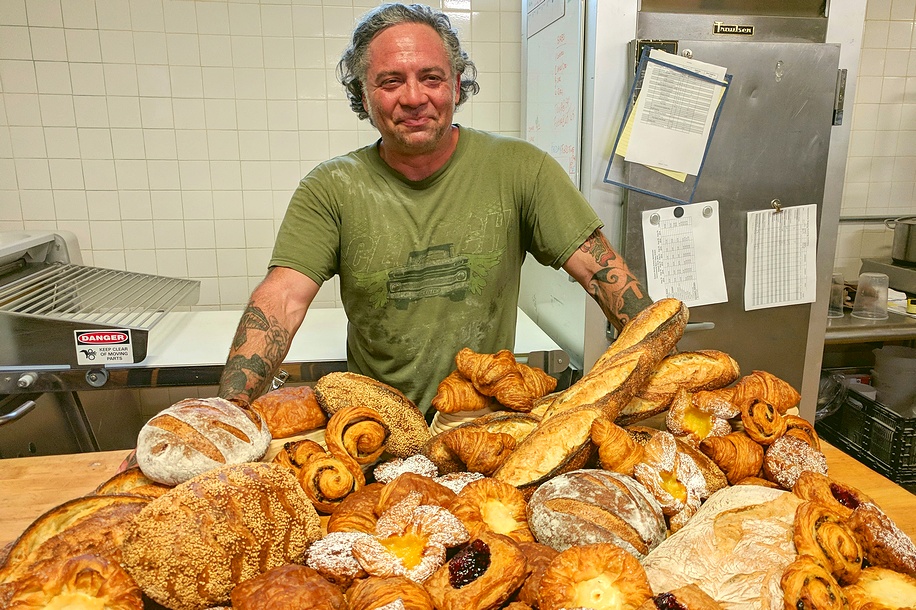Ryan Morgan is not a man you can easily forget. Neither is the bread that he creates at Sixteen Bricks Bakery (sixteenbricks.com). We’d been eating our way around Cincinnati for a couple of days before we had the chance to tour the bakery that supplies bread to many of the city’s restaurants—both casual and high end—that insist on a high-quality product.
Morgan revels in his role as the most unlikely of bakers. He left a career as a mechanic making medical equipment at Johnson & Johnson to help his mother in her struggling bakery. Not one to pull any punches, Morgan told us that the bakery turned out “some of the most garbage bread.” He shakes his head at the memory. “I don’t know why anyone bought it.”
Morgan, however, was bitten by the breadmaking bug and started afresh by opening his own bakery in 2011. He sharpened his skills working with a consultant and as an apprentice at another bakery. He also applied the attention to detail that he had honed in his work in the more life and death medical industry. Morgan now has 40 employees and turns out a stunning array of loaves, from sourdough and ciabatta to honey whole wheat, rye, and quinoa. They are all naturally fermented of flour, salt, water, and yeast—no extra flavorings or additives.
Bakery takes baguette as its cornerstone
 It all started with making a perfect baguette. “My whole goal in life was to make a real baguette,” Morgan said of the iconic French loaf. “It uses simple ingredients. It’s all about how you ferment.”
It all started with making a perfect baguette. “My whole goal in life was to make a real baguette,” Morgan said of the iconic French loaf. “It uses simple ingredients. It’s all about how you ferment.”
The classic baguette begins with a poolish—a mix of about a quarter of the total flour with about half the total water and a tiny amount of yeast. This mixture is allowed to ferment in the refrigerator overnight before adding more flour, water, and yeast to make a dough that will be shaped into loaves. The sourdough baguette begins with a mixture of a poolish and a sourdough starter, or levain, developed from wild yeasts.
Having perfected both recipes, Sixteen Bricks now turns out 1,200 baguettes a day to Morgan’s exacting standards. The texture is very similar. He picked up a fresh baguette and gave us a rundown on what he considers a great loaf.
“Number one,” he said, “you should hear crunch when you squeeze it.” But there’s more. “The scores on the top of the loaf should be in a neat line, and there should be three of them. Or five. Always an odd number. You should see dark and light spots on the ‘ears’ or edges of the scores.”
He sliced one of each, showing the big air bubbles inside and the silky, stretchy crumb. Both types were made with the same Sir Galahad flour from King Arthur, but the classic was airy and light—almost buttery. The sourdough was earthier but just as stretchy, and delightfully sour. Both could make a Parisian boulanger cry for joy.

